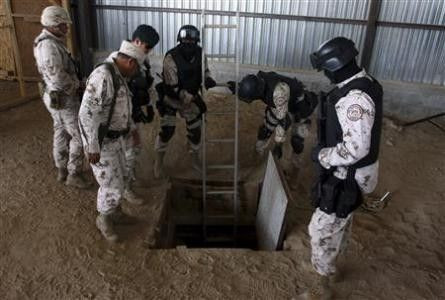Tijuana Homicide Rate In 2016: Mexican Murders Hit Record High

The city of Tijuana, located just about 129 miles south of the border from Los Angles, has always been known as a popular weekend getaway for American college students to cut loose. But with over 900 homicides due to drug-related violence in 2016, it has been a most violent year for the more than 1.7 million residents.
Eight years ago, Tijuana had its previous highest record of homicides with authorities having reported 844 killings. But 2016 has broken all previous records and has registered a rise of 36 percent in the number of homicides in 2016 compared to 2015 when the city registered 670 homicides.
“There is a tremendous conflict in the street over the sale of drugs…Every day, we see more addicts, and as we see more addicts, there will be more drug consumption, more problems, and more deaths as a result.” Miguel Angel Guerrero, coordinator for special investigations in the Baja California Attorney General’s Office in Tijuana, was quoted saying to the San Diego Tribune.
The data cited by the San Diego Tribune sourced from the Baja California Attorney General shows that Tijuana’s killings are the highest in adjoining regions. Mexicali, the state capital, had 112 homicides, Ensenada had 85, Rosarito Beach had 80 and Tecate had 77.
Despite the highest homicide rate, the violence in the city is reportedly not as widespread as compared to the rival gang wars between the Arellano Felix Cartel and the Sinaloa Cartel for control of an important smuggling corridor– the Tijuana plaza–during 2008 to 2010.
Violence subsided for some time after Sinaloa extended control, but then began rising again after conflict emerged with the Cartel Jalisco Nueva Generacion and Arellanos, a group based in central Mexico.
The violence in recent years, however, has been directed towards the local drug dealers rather than heads of cartels or other important groups. Approximately 85 to 90 percent of the homicide victims in 2016 were neighborhood drug dealers, according to Guerrero of the Baja California Attorney General’s Office.
“This is not going to end until there is a true policy in terms of addiction…Until governments in large cities do something for addicts, this is going to continue. This is a health problem, it’s not a law enforcement problem,” said Guerrero.
But David Shirk, a political science professor at the University of San Diego who has studied crime and drug violence in Mexico, offers a different explanation for the rise in crime as he sees a correlation with the arrest last January of the Sinaloa Cartel leader Joaquin “Chapo” Guzman.
Though “nobody is talking about it… it has to mean something in terms of the reaccomodation of drug trafficking networks in Mexico,” Shirk told the San Diego Tribune.
© Copyright IBTimes 2025. All rights reserved.





















